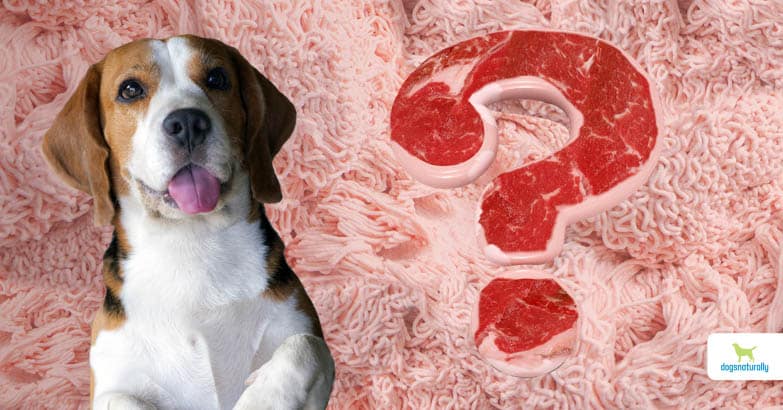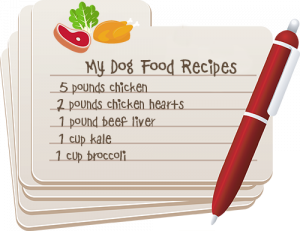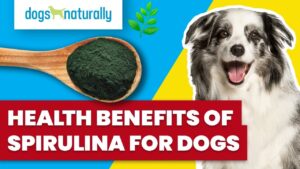The meat in pet foods may not be what you think it is.
This year alone, consumers will spend billions of dollars on food, treats, collars
Despite its size and the implications for our dogs’ health, the pet food industry is poorly regulated. That’s for both manufacturing and ingredient sourcing. Currently, no plant inspections are required to manufacture pet foods. Many of the ingredients on the label are not exactly what you think they are. In fact, when it comes to meat, what you imagine and what’s actually in the food might not be the same.
Be prepared. I’m going to tell you about some meat processing techniques, and the terminology that’s used to mislead us. Don’t read this while you’re eating dinner.
When Is Meat Not Meat?
Pet foods can contain meat, meat meals
Sure, commercials show fresh, whole chicken breasts in the food they’re advertising. I can guarantee that’s not the meat going into kibble. The same holds true for canned pet foods. Some raw food companies are also using a lesser quality meat than whole muscle meat.
According to the AAFCO guidelines meat is:
“the clean flesh derived from slaughtered mammals and is limited to that part of the striate muscle which is skeletal or that which is found in the tongue, in the diaphragm, in the heart, or in the esophagus; with or without the accompanying and overlying fat and the portions of the skin, sinew, nerve, and blood vessels which normally accompany the flesh. It shall be suitable for use in animal food.”
Nothing in that definition indicates how the “meat” is obtained. Nothing is said about whether it’s whole muscle meat (think steak or whole chicken breast). There’s no comment on if it’s comminuted or mechanically separated meat (think hot dogs). And there’s no mention of denatured meat (think charcoal-colored substance).
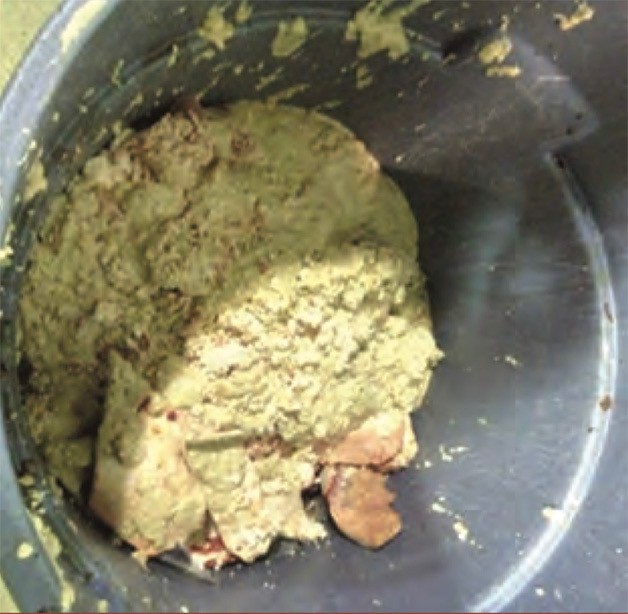
Meat Meals And By-Products
Meat meals and meat by-product meals are used in processed diets such as kibble and canned foods, but not raw diets. These pictures of a “waste barrel” I personally took are from a USDA human food facility. The barrel was being picked up by a local pet food processing facility. It’s a company that works with several plants to use their “waste products.”
Contaminants
In the next picture you can see pieces of plastic I’ve circled. I was too grossed out to move things around to get a better picture of how big the piece of plastic was. The plant manager went so far as to tell me his employees think nothing of throwing a wad of chew in those barrels when they come back from lunch. It doesn’t matter how high the temperature is when the product cooked, there’s still too much garbage!
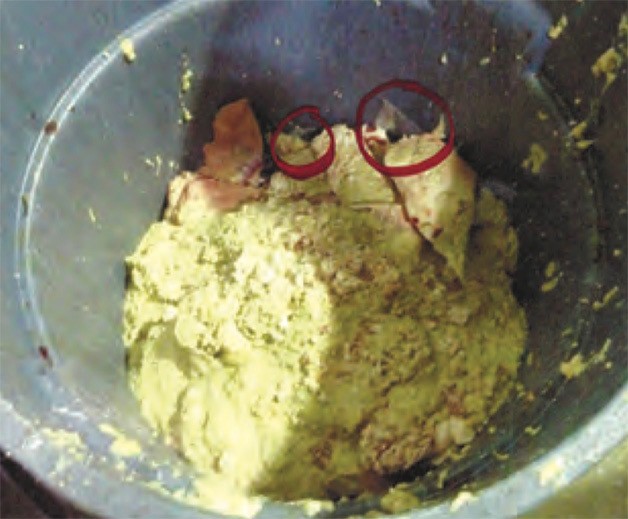
Mechanically Separated Meat
So what is mechanically separated meat? And how is it separated?
This is a process used both in human food production and pet food production. The leftover carcass is ground down to a paste-like product. Then it’s put through a
Making Meat Appealing
To give mechanically separated meat flavor and color, artificial ingredients are added.
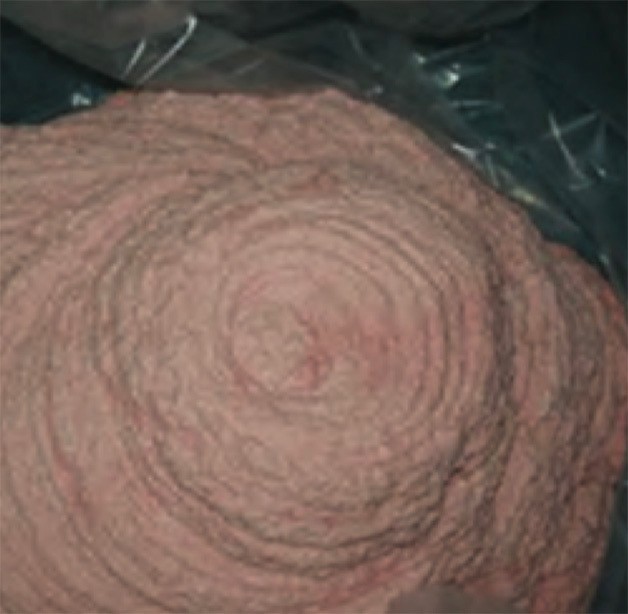
This is where problems arise. And it has to do with what manufacturers can legally add back in to make products “more appealing”. I don’t know about you, but to me the idea of eating meat paste lost its appeal quite some time ago!
Legally, both human and pet food manufacturers can add colors back in. This is done so the meat looks fresh and pink instead of the gray color. This gray color comes from the meat separation process.
The end result is a very unappetizing pink slime.
Denatured Meat
There are several ways to create a denatured product. From a meat producer’s standpoint, denaturing means adding something to mark meat or meat products. This is done so they’re easily identified as “Inedible: Not Intended for Human Food.”
The United States Department of Agriculture (USDA) allows the meat to be identified with a distinct color, odor or taste. This is so it cannot ever be mistaken for human food.
But that doesn’t stop them from being used as meat in pet foods.
The USDA allows the following “identifying agents” to be used as denaturing agents. (And none of them sound like things we want our dogs to eat):
- Crude carbolic acid
- Cresylic disinfectant
- FD&C green No. 3 coloring
- FD&C blue No. 1 and No. 2 coloring
- Finely powdered charcoal or black dyes
- Any phenolic disinfectant conforming to commercial standards CS 70-41 or CS 71-41 which shall be used in at least two percent emulsion or solution
- A formula consisting of 1 part FD&C green No. 3 coloring, 40 parts water, 40 parts liquid detergent, and 40 parts oil of citronella
- A 6 percent solution of tannic acid for 1 minute followed by immersion in a water bath, then immersing it for 1 minute in a solution of 0.022 percent FD&C yellow No. 5 coloring
- A solution of 0.0625 percent tannic acid, followed by immersion in a water bath, then dipping it in a solution of 0.0625 percent ferric acid
- No. 2 fuel oil, brucine dissolved in a mixture of alcohol and pine oil or oil of rosemary, finely powdered charcoal
- A 4% or 6% by weight of coarsely ground hard bone
- “Other proprietary substance” approved by the USDA
What’s Not On The Label
Just like mechanically separated meat, artificial color can be added back to denatured meat to make it look normal.
And pet food companies don’t have to list anywhere on the label that mechanically separated or denatured meat was used.
USDA facilities that produce meat for humans are required to denature any meat product destined for pet food. There’s supposed to be no possibility a person would eat it.
I once tried to purchase meat from a large USDA facility for my raw food. The on-site inspector wouldn’t let it out of the plant without a chemical denaturing once he knew it was for pet food. Needless to say, I did not and could not go through with the transaction. Now I’m always wary of other companies’ practices, knowing what I have been up against to find clean meat.
There are a few exceptions to this rule. One concerns the type of facility the pet food is processed in.
- If the pet food is processed in a USDA plant using shared equipment, the plant must use human edible products. These are USDA inspected meats.
- If using uninspected products, the pet food must be processed using separate equipment and can be denatured meat. This comes from a USDA inspected facility – but it isn’t USDA inspected meat.
It’s important to note the distinction between USDA inspected meats and USDA inspected facilities!
Labels Can Be Purposefully Deceptive
Good quality meat isn’t cheap for humans or for pets. But pet industry advertising and labels can confuse even the most knowledgeable consumers. One of my pet peeves (pun intended!) are the made-up terms used by the pet industry. Until recently, when AAFCO updated the regulations, there was no such thing as “human grade ingredients”. But the industry coined the term and used it for years to make consumers feel better about what they were buying. The correct term for a high quality human product would be “human edible.”
RELATED: Find out what human grade ingredients really means …
There’s also no such thing as “
I’ve been inside many different processing plants that process all different types of products. This includes countless human meat processing facilities, a local rendering plant and a huge plant that does all the mechanical separation of meats for many of the large kibble manufacturers. As a consumer, you expect to be able to trust what you read. You want to trust the manufacturer to do their job. You want to trust that your retailer knows the companies and their manufacturing practices. The ugly truth is that many of the manufacturers today are only concerned with their bottom lines and profit margins. And the pet population is paying the price.
It’s a difficult task to sort out all the information that is purposely designed to confuse the consumer. We have more choices than ever and there are some incredible companies doing great things to make a positive difference. You just have to work a little harder to find them. I encourage you to ask questions, lots of questions! If there is nothing to hide, the questions are easy to answer and you want to know you’re getting what you paid for.
RELATED: How Is Dog Food Made?

